The Garmin GHP 12 Autopilot system. On the left the compass, next the ‘Brains’ and the display unit.
My Pacific Seacraft Dana 24 uses a Simrad TP30 tiller pilot which copes most of the time but just can’t cope when the conditions worsen or the boat is a bit over canvased. What this means in reality is that we tend to reef early to keep ‘Dave’ happy when we could be sailing faster if we had a more powerful autopilot. Since no one makes a serious tiller pilot I have recently been thinking about fitting an under deck pilot even though it would be far from an easy installation.
My first thoughts were that it could be possible although extremely difficult and even if a unit could be fitted it would use too much power. However, after much thinking and research I now think it is doable and feasible even. A system like this will be complicated to install, it will add weight and it will consume more power than the tiller pilot. That’s the down side. On the up side we get half the cockpit back and would even be able to lift the tiller up out of the way while sailing or motoring. The TP 30 is also noisy and its sounds can be irritating when quietly sailing. An under deck unit would be almost silent.
Because the unit is hidden under the deck it is not going to get wet and does not need to be placed on the tiller each time you want to use it. It would be much more powerful and able to cope with heavy tiller loads and unlike the TP30 could be adjusted in many different ways to maximise the performance and power usage.
One of the main problems with tiller pilots is that they are always situated right at the back of the boat and because the compass is inside the pilot it cannot react as quickly as a compass paced more forwards and at a lower level. It’s true that the TP30 can use a remote compass but that doesn’t disguise the fact that it is noisy and not very powerful. Read a review of the TP30 here
Is it even possible?
This discussion is about the possibility of fitting an under deck pilot to the Pacific Seacraft Dana 24 (read a review here) although many of the same principals will apply to most small yachts.
The first thing we need is a tiller arm mounted on the shaft under the deck to link to the autopilot drive unit. But how to attach a tiller arm to the rudder shaft? In order to do this, the rudder log (the fibreglass tube that runs from hull to deck level) would have to be cut down. So, drop the rudder about a foot and cut it down about 4" or 5" down from deck level. Then a stern gland would need to be fitted to the log much like the engine shaft in order to ensure that water cannot get into the boat. Even cut down the rudder log would be well above the waterline so it is possible that a gland could be dispensed with but fitting one would be the right thing to do.
This is the rudder log. It will need to be cut down to allow the fitting of an aft facing tiller arm. Cutting the log will weaken the boat but since the Dana is so over built and the gas locker is moulded in just next to it I doubt it will be a problem!
The tiller arm would then be mounted above the gland facing aft on the rudder shaft. I have found a company Jefa who make lovely alloy arms that will never break. Now, because the rudder log is no longer attached at the deck we have weakened the structure and are now relying solely on the bronze deck fitting to take the strain. This is no problem as it is ridiculously over engineered. Recently I have noticed some play at the top of my rudder and sometimes it makes a clicking noise as it moves. So what it really needs is a nylon bearing instead of a metal to metal loose fit.
A typical Jefa arm. Made of solid Alloy, not cast. It splits apart for fitting. This model shows a slot for locking the arm in place but this won’t work on the Dana as the rudder shaft is a hollow tube. A different system for locking it on must be found.
The deck fitting would need to be removed and machined out to accept a nylon (or delrin or whatever would work best) bearing that could be easily replaced when worn.
This is the ridiculously oversized rudder guide. It will need to be removed and machined out to accept a bearing. This will make it very smooth and quiet and take any slight play out of the system.
So now we have a tiller arm. The battle is half won. All we have to do now is connect a drive unit to it. Sounds simple doesn’t it. Well it isn’t. Most drive units are only designed to move the helm 35 degrees either side of straight ahead making a total tiller arc of 70 degrees. Obviously this is enough for any boat when actually steering the boat when under way but the Dana has a very large tiller movement and in fact, when reversing every bit of that movement is required. This is a problem.
There are solutions but they are all compromises and it all comes back to the tiller arc. The way to increase the arc is to attach the drive unit on the tiller arm closer to the rudder. This will give us enough movement so that when we are mooring and need the full sweep of the rudder we can have it. But there is a down side to this and that is that it will reduce the power and torque of the drive considerably. But this need not be a problem as most drive units (even the smallest ones) are very powerful and even with their power reduced by half would be at least twice as powerful as the TP30.
If it were only that simple. Unfortunately as well as reducing the power you speed up the movement of the drive unit so the corrections to the helm would be very sudden and it is possible that the boat would over steer and the pilot would not be able to catch up and no amount of adjustment would help.
A delicate balance needs to be found. Thankfully physics comes to our aid and immediately rules out certain types of drives. The most common type of drive seen is a linear drive either electric or hydraulic. It’s basically a cylinder with a powered rod that moves back and forth. The problem is that even if you moved the attachment in close to the rudder the drive unit would not be able to articulate with the extreme angle needed on the Dana which I have measured to be 60 degrees either side of straight ahead! Almost double the standard amount.
So linear units are out. What’s left? Well Jefa do some lovely drive units but they are heavy and expensive and use about 4 amps an hour on average which is too much for a small cruising sail boat. This unit has to mount close to the tiller arm and that means there would be an additional 12 kilos right at the back of the boat which is not ideal.
Here is the Jefa autopilot unit. Very strong, beautifully made and compact. Sadly also very heavy at 12 kilos. It also uses a lot of power. The clutch alone takes 1.4amp/hr making this unit a bit of an overkill for a 24 foot boat!
Now I was running out of ideas. Luckily I came across the Octopus cable drive unit from a Canadian company. In fact Simrad offer the exact same unit as a drive option on their autopilots so that must be a good sign. The unit weighs about 4 kilos and can be placed up to 6 feet away from the pilot. It is not as powerful as the Jefa unit but still adequate for the Dana. The plus points of this kind of unit are many.
The Octopus Type RS for sailing boats. Allows remote mounting and a lighter weight. It uses a flexible cable to ‘push/pull’ the rudder. This is the most likely candidate so far.
Most autopilot systems need a rudder feedback unit installed but the Octopus unit has it already built in. This simplifies the installation considerably. Thanks to the push pull cable it can be fitted either vertically or horizontally well forward of the rudder keeping weight out of the stern. Plus it uses considerably less power. Average consumption should only be a couple of amps at most. Obviously the less work the pilot has to do the lower this figure will be.
The Autopilot brain
Having solved the tiller arm and drive issues we now have to decide which autopilot to use. Most pilots can be set up to work with any drive so you have a large choice. Personally I do not like the look of the Simrad autopilots or their displays and I have vowed never to have a Raymarine product on board my boat ever again there are fewer companies to choose from but there’s still a fine choice. There’s B&G, Jefa make one, Coursemaster from Australia do a range. There’s the French company NKE who supply most of the French racing boats but my favourite so far is the Garmin unit. It has a colour screen and many options to change all the settings to maximise the efficiency of the package.
This unit has a separate compass that can be placed in the optimum site for best performance, a separate CPU and the display. The display can be placed next to the engine controls to keep from cutting holes for it elsewhere. It will be a minor inconvenience to have to reach down to start and stop the autopilot but that’s about the only down side although there is a wireless remote control option which would make the unit even easier to use and offers the ability to steer the boat from the foredeck or from up the mast if solo and navigating through coral reefs. It has a range of 45 feet.
The Garmin colour screen. It has different settings for day and night viewing.
The new pilot will enable tacks and gybes to be adjusted to suit the boat among other features. But best of all it will be powerful enough to leave a bit too much sail up if we feel like going fast and it will steer the boat better when it’s surfing down waves in a gale. The unit will be kept dry and this will ensure that it lasts a long time. The added bonus is that we get back one half of the cockpit which is normally taken up by Dave and his ugly cable.
Conclusion
There is a lot to be said for the TP30 tiller pilot. It does steer the boat most of the time using very little power. We would be lost without it. The down side is that it is not very adjustable and it is always in the way and out in the elements and when the conditions worsen it starts to struggle.
An under deck unit will work better, be more adjustable and able to steer the boat even in extreme situations. Being under the deck it is protected from the elements and this will ensure a good reliability. On the down side it weighs more, probably about 10 kilos all said and done and we’d surely keep Dave and Dave 2 as back ups anyway. The autopilot is the most essential bit of kit on the boat after the sails! It will use more power but because the unit is so adjustable it can be tuned so that it can keep the boat on course with the minimum of tiller movement.
Obviously it’s a costly item and I don’t suppose there will be much change from £2500 but that compares to the cost of a decent wind vane. It’s also quite a mission to install but I think it would be worth it in the end. It is at least possible. In any case when was anything worthwhile easy?
If anyone has any thoughts, comments or questions I’d love to here them.
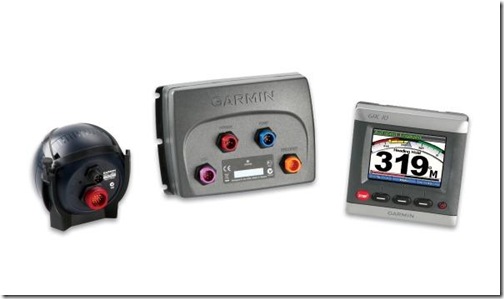
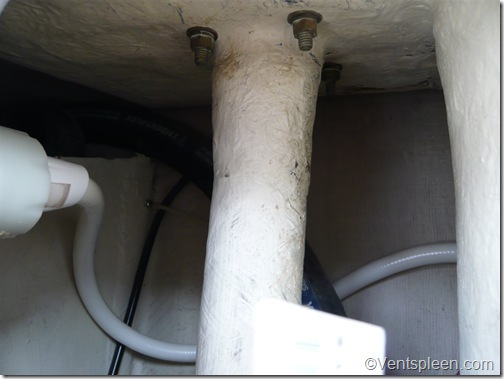
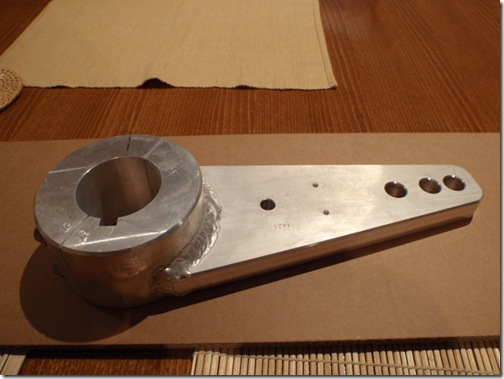
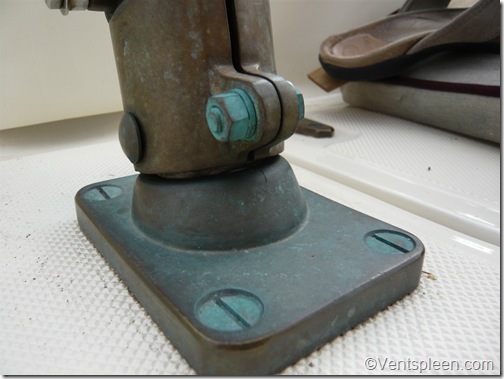
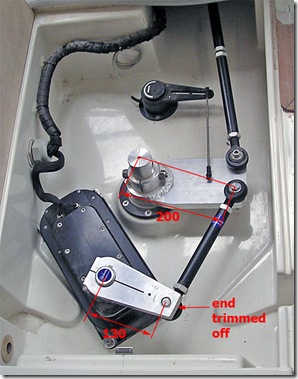
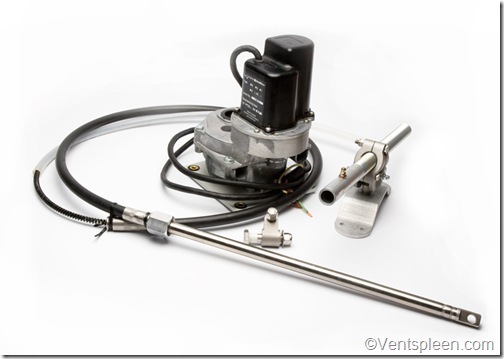
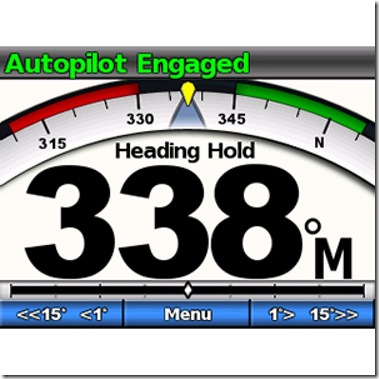
Stand, steer & suck the salt from your lips instead.